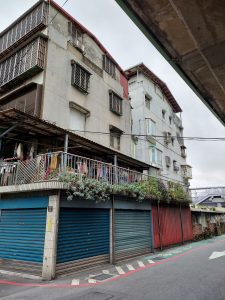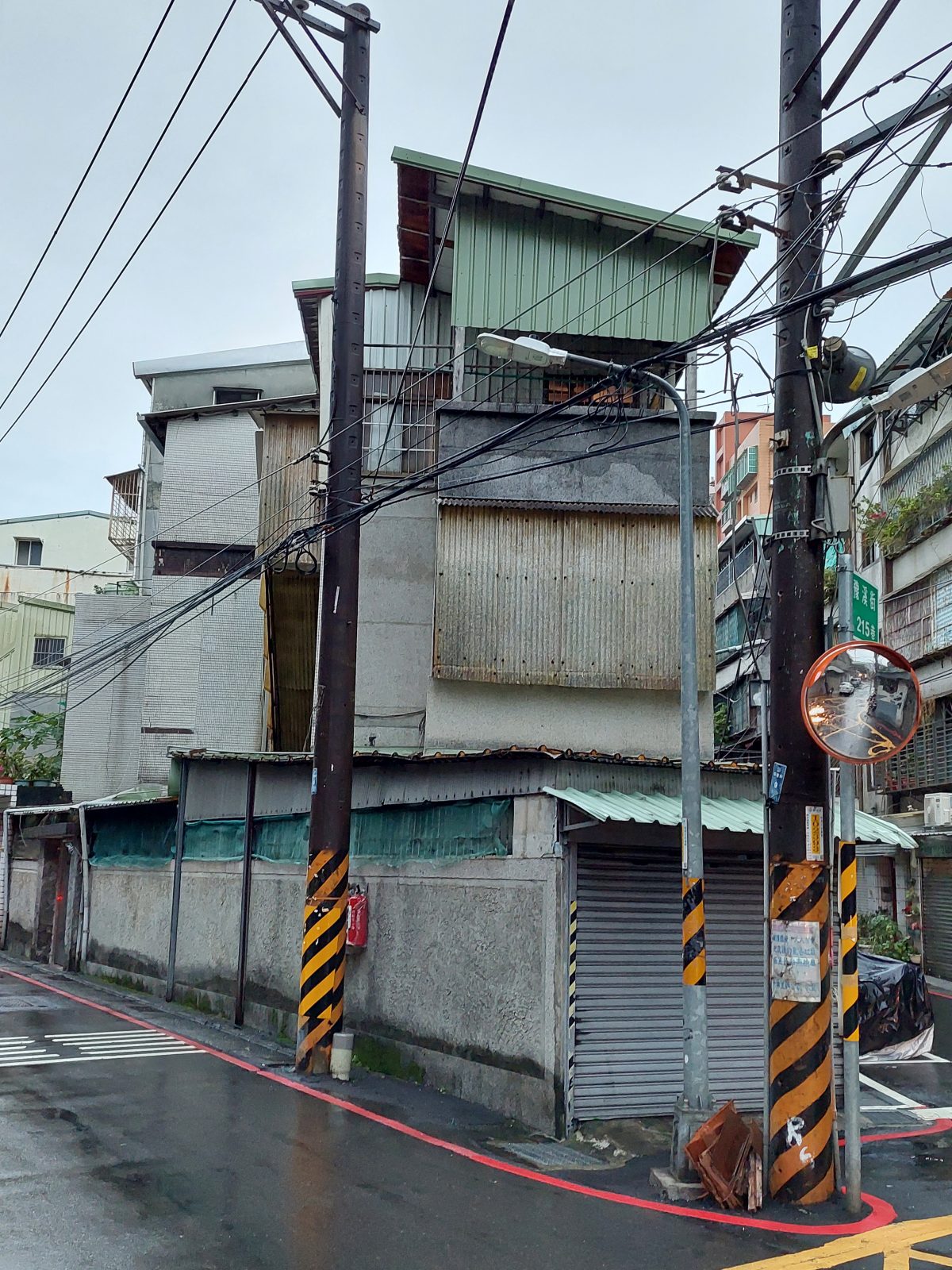back when i still lived in lukang, one of the neighborhood uncles attempted to describe taiwanese domestic architecture to me. he said,
no matter how big the builders make it, you discover that the house will never have enough room. because once taiwanese people move in, they will add window cages and, of course, they’ve got to put a metal siding structure on top of the roof
the uncle was joking but at the same time pointing out something that he found a real aesthetic flaw among taiwanese people. i will try to avoid making such judgments (even as i present them)
living in lukang, he was far too aware of the kinds of compromises and jerry rigging one must hazard to live reasonably well in most taiwanese spaces. his neighborhood was an odd mix of 18th and 19th century structures, some cut in half by street widening and “fixed” with corrugated aluminum walls, nearly all sprouting some kind of add on to the top or side. here and there, particularly on the edges of the neighborhood, were four story tile buildings constructed in the 1980s. his was not a neighborhood deemed worthy of preservation. and, truth be told, one doubts that anyone in the neighborhood would have wanted to be on the preservation list in the 1990s when he made this comment. in lukang, people were–and still are–making do with multiple claims on structures that make it impossible to sell and difficult to remodel, trying to keep some of their history while not sacrificing on comforts like air conditioning.
but the uncle’s remarks had to do with all taiwanese domestic architecture, not just that in lukang:
no matter how big the builders build it, you’ll discover that it’s never big enough
yet far be it from me to denigrate add-ons!
after all, i live on a concrete add on, with an overhead mixed sheet metal and transparent overhead covering (to keep the old roof, which has begun to have drainage problems, from leaking and causing wall cancer 壁癌 in my landlord’s apartment downstairs). apparently, it’s legal, which is good; but it’s also a bit rare amid the roof add-on structures of taipei for having concrete, rather than sheet metal walls
ah, yes, sheet metal walls, corrugated aluminum…
this versatile, if ugly and probably not so safe in typhoons, solution to the lack of space lets those who have access to a roof add a few more rooms to their house. these rooms may serve as pigeon houses, shrines for family gods and ancestors (which would otherwise occupy most of one’s living room and smoke things up badly for all in the house), extra bedrooms for a growing multi-generational family, or rental units
i did mention that i live in a rooftop add-on (頂蓋 ding-gai)?
roof add-on units have a mixed reputation
when i asked friends online whether i should or shouldn’t live in a ding-gai…well, the response! those who knew me best, however, convinced me of the virtues of living up on the roof
i can understand why one might not feel entirely safe in the advent of earthquakes, typhoons, or–especially–fires, as the iron sheet wall structures generally do not have a second means of egress and, in some cases, occupy the entire roof. one may also, it’s true, pity the poor architect who designed a building only to see it sprout such structures. iron sheet wall structures bake in the summer and do not hold up well to taipei’s cool, humid winters either. those who live in such structures must be willing to spend more on air conditioning and a dehumidifier or otherwise suffer the brunt of taipei’s climate. still, they often offer roof space for gardening, ample sun and air to hang out clothes to dry, and no upstairs neighbors. they come in well on the price per square foot. thus, there are always people willing to rent these units
i’m glad, however, mine is concrete and not tin. just saying


currently add-ons are a target of city image and building safety campaigns even if, as reported by BBC in 2015, demolishing these structures outright would be “political suicide” for local officials (all that real property gone in just a few moves of the bulldozer). so it’s hard to say how long they will be part of taipei’s landscape. an adaptation to living without enough space–one that provides many cheap rental units as well as just extra storage or living space for those who own an apartment or a building–these kinds of add ons are an element of architectures that i’ve called the architectures of making do. the rooftop addition is just the most evident of add ons. we can also see add ons in extensions of enclosures, enormous window cages, roofs that push out over an alleyway to expand outdoors domestic space, or in practices of creating semi-private space through sidewalk and alleyside gardening.
what makes many of these add-ons aesthetically objectionable to architectural purists is often the cheapness of the material. i will not argue that they are pretty. but they are a way of making do
given changing attitudes about urban beautification in taipei, these metal skin structures might become nostalgic reminders of an uglier city that still had more of a human touch, a kind of human quality in its failure to be beautiful. as for me, i think of the rooftop add on as something like night markets. it’s not fine dining in most cases but it deserves respect for hitting the spot. there are even artists who depict the add ons, with their riot of different materials and surfaces–signage, metal sheeting, corrugated aluminum, vinyl sheeting, sometimes bricks, and even black mesh netting–as having a haphazard beauty. maybe the architectures of add on derive from an era in which taipei was a city of refugees, migrants, and squatters. but isn’t that a history we should remember in our architecture?
while i’m at it, i’d love it if some of you readers would post or send me images of your favourite examples of taiwanese add on architectures (or add ons from elsewhere). i’m serious, y’all!

